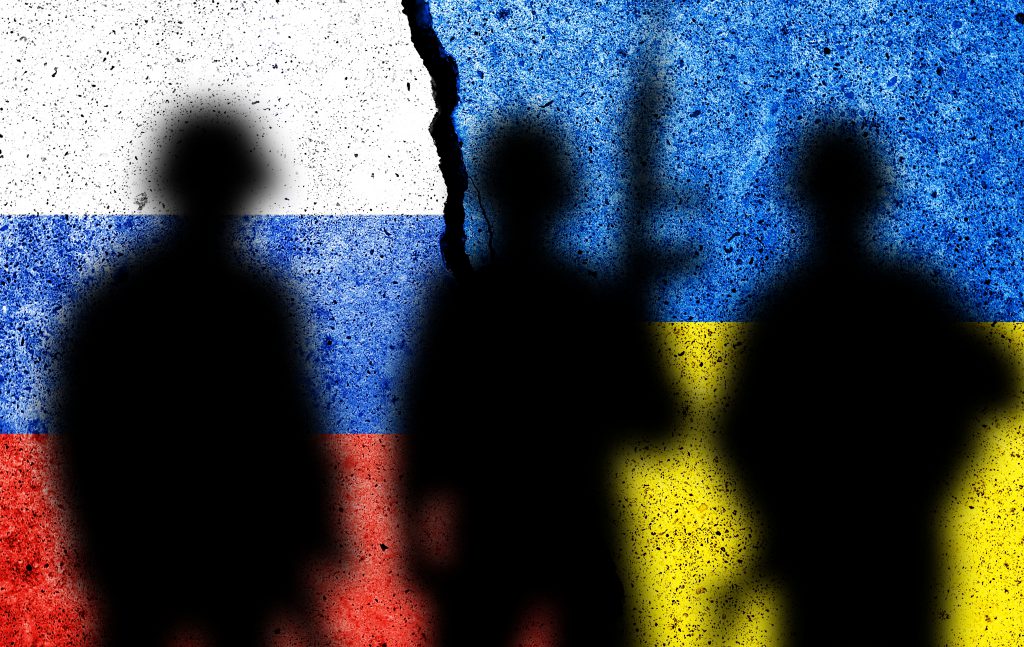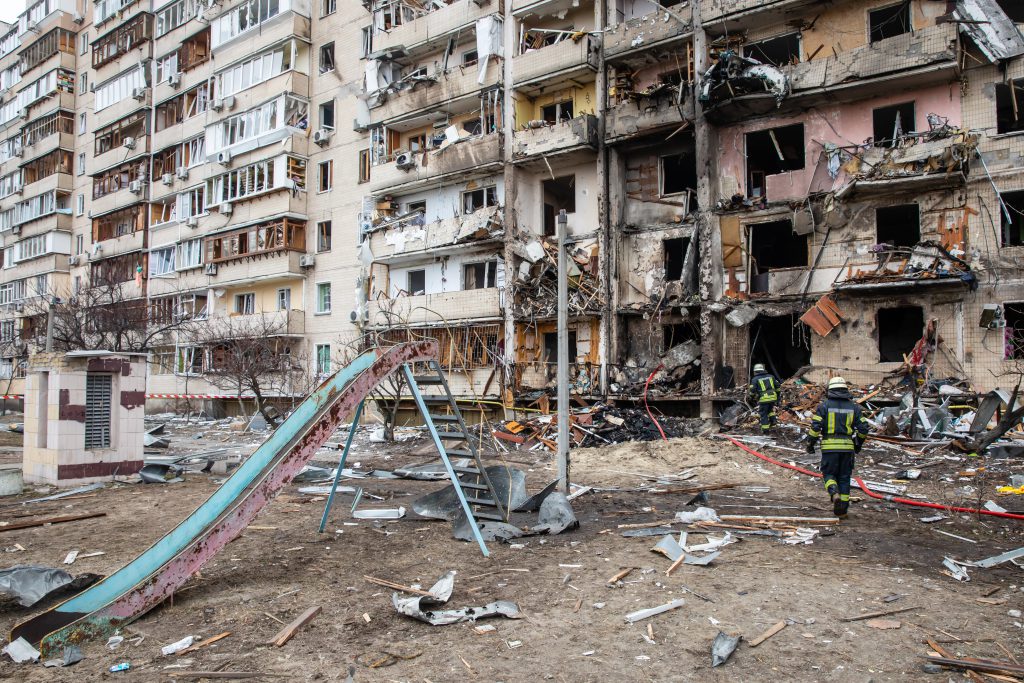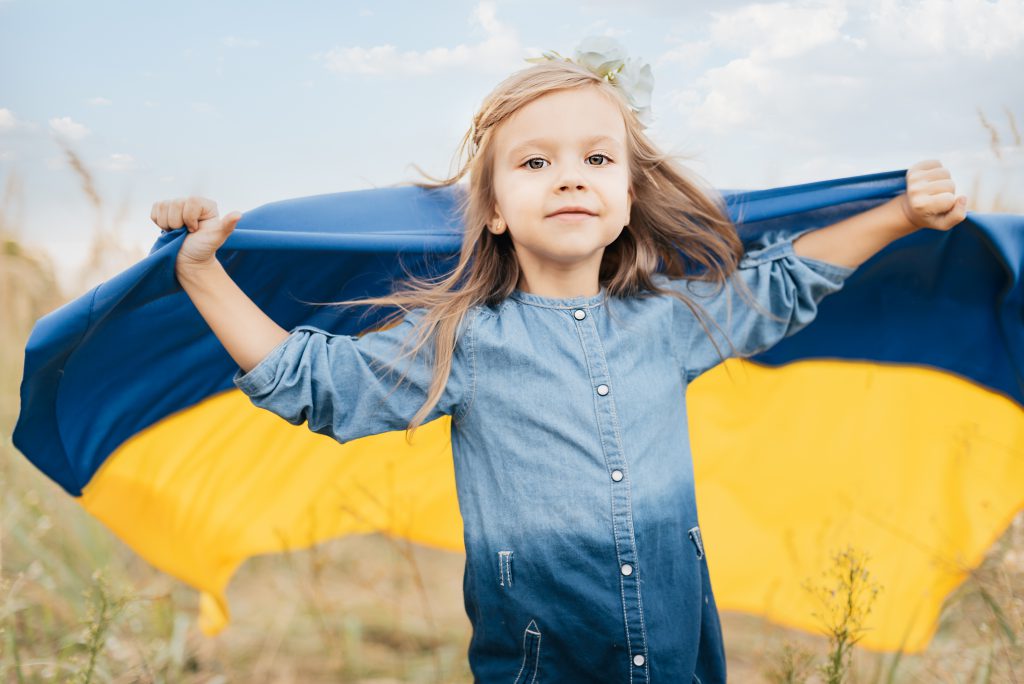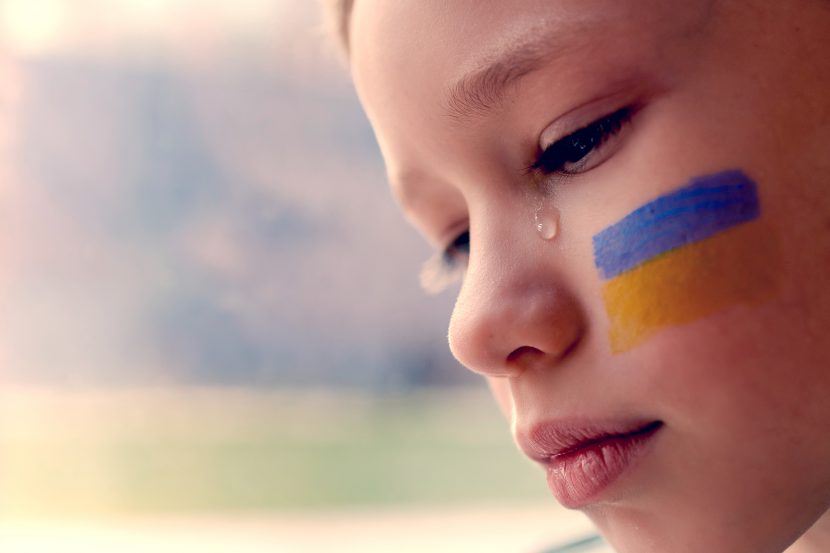In light of the recent events in Ukraine, it is important to emphasise maintaining peace and protection for all children in Ukraine. The ongoing conflict in Ukraine poses an immediate and growing threat to the lives and well-being of the country’s 7.5 million children (UNICEF, 2022).
Children have been killed, wounded, uprooted and severely distressed by the escalating violence all around them (Denton, 2022). Hundreds of thousands of children and their families have been internally displaced and, since 24 February 2022, over two million refugees have fled the country (Council on Foreign Relations, 2022) in search of safety – the majority being women and children.
Events leading to 2022 Ukraine crisis
There are two significant events leading to the current Ukrainian crisis – the events in Crimea from the beginning of 2014 and the events that have been taking place in eastern Ukraine starting from the second half of 2014 (Szpak, 2017, 261). Following the protests of Euromaidan and the consequent fall of the Ukrainian president Viktor Yanukovich on 26 February 2014, pro-Russian forces took control of strategic positions and captured the parliament in Crimea.
On 6 March 2014, the Crimean Parliament announced its decision to secede from Ukraine and join the Russian Federation and at the same time, it was decided that a referendum on the status of Crimea would be held. It was indeed held on 16 March 2014 and ended with a result of 95.5 percent votes in favour of joining Russia, with a turnout of 83 percent of people.

In April 2014, concurrent Anti-Maidan demonstrations held by pro-Russian separatists in Donbas (eastern Ukraine), turned into hostilities with the Ukrainian armed forces. After capturing local government buildings, the separatists declared the creation of the Donetsk People’s Republic and Luhansk People’s Republic (Rulac Geneva Academy, 2022). From the outset, Ukraine has consistently claimed that Russian soldiers were participating in the fighting in eastern Ukraine.
Russia has denied these allegations, claiming that the Russians fighting in Ukraine are volunteers, including discharged members of the Russian Army (Szpak, 2017, 262). However, President Putin openly acknowledged that the Russian Army participated in the annexation of Crimea with the presence of Russian military specialists in eastern Ukraine. On the other hand, Ukraine accused Russia of having shot down a Malaysian Airlines flight MH17. In turn, both have accused each other of cross-border shelling.
Minsk Agreements 2014 and 2015
In September 2014, Ukraine and the Russia-backed separatists agreed on a twelve-point ceasefire deal in Minsk. The provisions included prisoner exchanges, deliveries of humanitarian aid and the withdrawal of heavy weapons. However, the agreement quickly broke down, with violations by both sides (Firstpost, 2022). In February 2015, representatives of Russia, Ukraine, the Organisation for Security and Cooperation in Europe (OSCE) and the leaders of separatist-held regions Donetsk and Luhansk signed a thirteen-point agreement.
Since the agreement included provisions for a cease-fire, withdrawal of heavy weaponry, Donbas would have autonomy with veto powers over certain foreign policy decisions. Moreover, its separatist fighters would be integrated into the Ukrainian state, Russian “volunteers” would withdraw and Ukraine’s borders would remain the same (Firstpost, 2022).
The issue with the 2014 and 2015 Minsk Peace Agreements is that both sides, Russia and Ukraine, interpret the agreements differently. The Ukrainian government views them as a means to reunite Ukraine and fully restore Ukrainian sovereignty, though with certain devolved powers given to the two regions. On the other hand, the Kremlin believes that the agreements enshrine a process that would see a Russia-aligned administration in Luhansk and Donetsk where a special status would be granted to them before they are reunited with the rest of Ukraine. However, efforts to reach a diplomatic settlement and satisfactory resolution have been unsuccessful.
In 2021, tensions between Russia and Ukraine escalated with Ukraine strongly suggesting its intention to join the North Atlantic Treaty Organisation Alliance (NATO). Also, fighting has escalated in Ukraine’s eastern region of Donbas (Rulac Geneva Academy, 2022). In January and February 2021, diplomatic attempts to de-escalate proved unsuccessful. On 24 February 2022, Russian forces entered Ukraine, which was the beginning of a full-scale land, sea and air invasion of Ukraine’s military assets and cities across the country.
Applicable international law
International humanitarian law (hereinafter IHL)
For an international armed conflict (hereinafter IAC) to exist, there must have been a resort to armed forces involving at least two states. The hostilities between Russian armed forces and Ukrainian armed forces constitute an international armed conflict governed by IHL (Human Rights Watch, 2022), primarily the four Geneva Conventions of 1949 (hereinafter 1949 GCIV) and its first additional protocol of 1977 Protocol I (hereinafter API), as well as the rules of customary international humanitarian law.
Both Ukraine and Russia are parties to the 1949 GC IV (United Nations Treaty Collection, 1949) and API (International Committee of the Red Cross, 1977). IHL provides protections to civilians and other non-combatants from the hazards of armed conflict, and this provision applies to children. It addresses the conduct of hostilities, the means and methods of warfare by all parties to a conflict (Human Rights Watch, 2022). Foremost is the rule that parties to a conflict must distinguish at all times between combatants and civilians. Civilians may never be the deliberate target of attacks or used as human shields.
Children are first protected by IHL if they are wounded, sick or shipwrecked, as civilians and as members of the civilian population. They also benefit from special protection because of their vulnerability (Sassòli et al., 2014, 325). Every armed conflict leaves numerous children without resources or separated from their families, a situation that renders them even more vulnerable.
More specifically, API article 77, subsection one, states that “children shall be the object of special respect and shall be protected against any form of indecent assault” (International Committee of the Red Cross, 1977). IHL aims to prevent the participation of children in hostilities. Parties to conflicts may not recruit children under the age of fifteen into their armed forces and have to ensure that they do not take a direct part in hostilities under API article 77 subsection two.
International human rights law
In addition to IHL, international human rights law applies during armed conflict. Ukraine and Russia are both parties to a number of regional and international human rights treaties, including the 1948 Universal Declaration of Human Rights (hereinafter the 1948 UDHR) (United Nations Human Rights Office of the High Commissioner, 1948), the 1950 Convention for the Protection of Human Rights and Fundamental Freedoms (hereinafter the 1950 ECHR) (Council of Europe, 1953), the 1967 International Covenant on Civil and Political Rights (hereinafter the 1967 ICCPR) (United Nations Treaty Collection, 1966), the 1984 Convention against Torture and Other Cruel, Inhuman or Degrading Treatment or Punishment (hereinafter the 1984 CAT) (United Nations Treaty Collection, 1984) and the 1989 Convention on the Rights of the Child (hereinafter the 1989 CRC). These treaties outline guarantees for fundamental rights, many of which correspond to the rights to which combatants and civilians are entitled under IHL.
It is vital to note that children’s rights are breached, not only during an armed conflict but also due to the aftermath of an armed conflict. Article 6 of the 1989 CRC states that “state parties shall ensure to the maximum extent possible the survival and development of the child” (United Nations Human Rights Office of the High Commissioner, 2021). Hence, both Russia and Ukraine must ensure children’s very survival.
The 1989 CRC covers all fundamental rights of the child in armed conflict such as articles 24, 27 and 28. The 1989 CRC contains its own provisions relating to armed conflict in articles 38 and 39. These articles are further supplemented by the Optional Protocol to the CRC on the involvement of children in armed conflict 2000 (hereinafter the Optional Protocol 2000) with both countries being state parties to the Protocol.
The Optional Protocol 2000 strengthens the protection of children in armed conflict; specifically, article 1 which prohibits children from taking part in direct hostilities (United Nations Human Rights Office of the High Commissioner, 2000), article 2 prohibiting compulsory recruitment into the armed forces of persons under eighteen years of age and article 3 raising the minimum age of voluntary recruitment from fifteen years of age (United Nations Human Rights Office of the High Commissioner, 2000) .
Adverse impact on children

The past eight years of conflict in eastern Ukraine have already inflicted profound and lasting harm to children. With the escalation of the conflict, the immediate and very real threat to Ukraine’s children has grown (UNICEF, 2022). Homes, schools, orphanages, and hospitals have all come under attack. Civilian infrastructure, like water and sanitation facilities, has been hit, leaving millions without access to safe water. Unfortunately, the Ukraine crisis has and will continue to negatively affect children’s well-being. Moreover, the ripple effects of this conflict are physically and mentally damaging for children caught in the middle of an armed conflict.
Mental health impacts
Children in Ukraine are suffering from psychological distress as a result of the armed conflict. The distress can cause nightmares, depression, social isolation and anxiety. Also, war trauma leads to long-term consequences on the psyche of children (Mellese, 2022).
The longer the conflict lasts, the worse the consequences on mental wellbeing will be. Dr Paul Wise, Professor of Paediatrics at Stanford University stated that “children are extremely vulnerable to insecurity, not only the physical trauma but the psychological trauma, and it can reverberate and have repercussions for a long time” (Kekatos, 2022).
Studies spanning many decades reveal that Adverse Childhood Experiences (ACE) have a powerful relationship to adult physical and mental health. There is a very wide and extensive body of research on the impact of war on the cognitive development of children, physical/mental health, and their well-being (Mellese, 2022).
Long-term mitigation strategies will be needed to support those that have been exposed to the conflict in Ukraine. In the immediate and short-term point of view, psycho-social support and access to good quality mental health services are necessary (Mellese, 2022). It is promising that some neighbouring countries are already setting in motion support services for Ukrainian refugees.
However, first-level response interventions should aim to strengthen the coping strategies and resilience of children and young people. Much work also needs to be planned to support the drivers of good mental health, such as securing good housing, education, income for families and more.
Ensuring physical well-being
There are physical risks for children that come with living in war zones, such as breathing in smoke and ash from fires and blasts that can affect the nose and lungs (Kekatos, 2022). During conflict, homes, hospitals and schools are damaged or completely destroyed. There is a lack of access to hospitals and lack of medical treatment, whereas outbreaks of disease and malnutrition can result in a health crisis (Koper & Rigby, 2022).
With regards to the Ukrainian conflict, critical medicine shortages have arisen and neonatal wards have been moved underground to be sheltered from bombing. The healthcare systems of neighbouring countries such as Poland, Moldova, Slovakia and Romania will face challenges particularly since most countries’ healthcare systems have been exhausted by two years of COVID-19.
In addition, in times of crisis, women and girls face particular and disproportionate risks including gender-based violence, abuse and sexual exploitation. Children with disabilities, unaccompanied minors and those with serious health conditions must be afforded special protection.
Children fleeing from the crisis are at a heightened risk of violence, abuse and exploitation (Russell & Grandi, 2022). When these children are moved across borders, the risks are multiplied. The risk of trafficking also soars in emergencies. A growing number of these children are arriving on their own, without family support, in an escalating child protection crisis (Russell & Grandi, 2022). Also, it is important that every effort be made for children who have been displaced across borders without their families or temporary foster care to reunify these children with their families as soon as possible.
Safeguarding a world without conflict for all children
The Ukraine crisis is a child rights crisis, it is essential to protect the fundamental rights of children affected by the armed conflict. Protection of children within the family environment; ensuring the provision of essential care and assistance, access to food, health care and education, prohibition of torture, abuse or neglect, ensuring humanitarian assistance and relief and humanitarian access to children in armed conflict must be a priority at this point.

Humanium, as an organisation, condemns the armed conflict currently happening in Ukraine and calls for peace, especially for young children who have been pulled into the conflict so suddenly and unjustifiably, and who may suffer long-term consequences precisely because of it. What’s more, we seek to raise awareness on the importance of both mental and physical health of all children in Ukraine. Join us in making children’s rights to a safe environment a reality by sponsoring a child, making a donation or becoming a volunteer!
Written by Igi Nderi
References:
Council of Europe. (1953, September 3). Convention for the Protection of Human Rights and Fundamental Freedoms. Council of Europe. Retrieved on 10 March 2022, from https://www.coe.int/en/web/conventions/full-list?module=signatures-by-treaty&treatynum=005.
Council on Foreign Relations. (2022, March 8). Conflict in Ukraine | Global Conflict Tracker. Council on Foreign Relations. Retrieved on 8 March 2022, from https://www.cfr.org/global-conflict-tracker/conflict/conflict-ukraine.
Denton, J. W. (2022, March 2). Ukraine crisis: What can business do for children and their families? International Chamber of Commerce. Retrieved on 8 March 2022, from https://iccwbo.org/publication/ukraine-crisis-what-can-business-do-for-children-and-their-families/.
Firstpost. (2022, February 22). Ukraine-Russia crisis: Understanding Minsk agreement and why it failed to resolve conflict. Firstpost. Retrieved on 9 March 2022, from https://www.firstpost.com/world/ukraine-russia-crisis-understanding-minsk-agreement-and-why-failed-to-resolve-conflict-10397551.html.
Human Rights Watch. (2022, February 23). Russia, Ukraine & International Law: On Occupation, Armed Conflict and Human Rights. Human Rights Watch. Retrieved on 10 March 2022, from https://www.hrw.org/news/2022/02/23/russia-ukraine-international-law-occupation-armed-conflict-and-human-rights.
International Committee of the Red Cross. (1977, June 8). Treaties, States parties, and Commentaries – States Parties – Protocol Additional to the Geneva Conventions of 12 August 1949, and relating to the Protection of Victims of International Armed Conflicts (Protocol I), 8 June 1977. ICRC databases on international humanitarian law. Retrieved on 10 March 2022, from https://ihl-databases.icrc.org/applic/ihl/ihl.nsf/States.xsp?xp_viewStates=XPages_NORMStatesParties&xp_treatySelected=470.
Kekatos, M. (2022, March 3). Mental health effects of Ukraine war zone on children. ABC News. Retrieved on 11 March 2022, from https://abcnews.go.com/International/mental-health-effects-ukraine-war-zone-children/story?id=83203801.
Koper, A., & Rigby, J. (2022, March 8). ‘A war for life of our child’: Health crisis spills out of Ukraine conflict. Reuters. Retrieved on 11 March 2022, from https://www.reuters.com/world/europe/a-war-life-our-child-health-crisis-spills-out-ukraine-conflict-2022-03-08/.
Mellese, J. (2022, March 4). The war in Ukraine can have devastating long-term consequences on the mental health of children and young people. Mental Health Europe. Retrieved on 11 March 2022, from https://www.mhe-sme.org/ukraine-crisis-mental-health-impact-young-people/.
Rulac Geneva Academy. (2022, February 25). International armed conflict in Ukraine. Rulac Geneva Academy. Retrieved on 8 March 2022, from https://www.rulac.org/browse/conflicts/international-armed-conflict-in-ukraine#collapse2accord.
Russell, C., & Grandi, F. (2022, March 7). Unaccompanied and separated children fleeing escalating conflict in Ukraine must be protected. UNICEF. Retrieved on 11 March 2022, from https://www.unicef.org/press-releases/unaccompanied-and-separated-children-fleeing-escalating-conflict-ukraine-must-be.
Sassòli, M., Bouvier, A., & Quintin, A. (2014). Civilian population. In How does the law protect in war? (p. 325). ICRC. https://casebook.icrc.org/law/civilian-population#_ftnref_024.
Szpak, A. (2017, May 7). Legal classification of the armed conflict in Ukraine in light of international humanitarian law. Hungarian Journal of Legal Studies, 58(3), 261-280. 10.1556/2052.2017.58.3.2.
UN Committee on the Rights of the Child. (1992, October 19). Customary IHL – Rule 135. Children. ICRC databases on international humanitarian law. Retrieved on 11 March 2022, from https://ihl-databases.icrc.org/customary-ihl/eng/docindex/v1_rul_rule135#Fn_4C6E6F6A_00017.
UNICEF. (2022, March 3). Conflict in Ukraine poses immediate threat to children. UNICEF. Retrieved on 8 March 2022, from https://www.unicef.org/emergencies/conflict-ukraine-pose-immediate-threat-children.
United Nations Human Rights Office of the High Commissioner. (1948, December 10). Universal Declaration of Human Rights. OHCHR. Retrieved on 10 March 2022, from https://www.ohchr.org/en/udhr/documents/udhr_translations/eng.pdf.
United Nations Human Rights Office of the High Commissioner. (2000, May 25). Optional Protocol to the Convention on the Rights of the Child. OHCHR. Retrieved on 10 March 2022, from https://www.ohchr.org/en/professionalinterest/pages/opaccrc.aspx.
United Nations Human Rights Office of the High Commissioner. (2021, January 1). Treaty bodies Treaties. Treaty bodies Treaties. Retrieved on 10 March 2022, from https://tbinternet.ohchr.org/_layouts/15/TreatyBodyExternal/Treaty.aspx?CountryID=37&Lang=EN.
United Nations Treaty Collection. (1949, August 12). Geneva Convention relative to the protection of civilian persons in time of war. UNTC. Retrieved on 10 March 2022, from https://treaties.un.org/pages/showdetails.aspx?objid=0800000280158b1a.
United Nations Treaty Collection. (1966, December 16). International Covenant on Civil and Political Rights. UNTC. Retrieved on 10 March 2022, from https://treaties.un.org/Pages/ViewDetails.aspx?chapter=4&clang=_en&mtdsg_no=IV-4&src=IND. United Nations Treaty Collection. (1984,
December 10). Convention against Torture and Other Cruel, Inhuman or Degrading Treatment or Punishment. UNTC. Retrieved on 10 March 2022, from https://treaties.un.org/pages/ViewDetails.aspx?src=IND&mtdsg_no=IV-9&chapter=4&clang=_en


